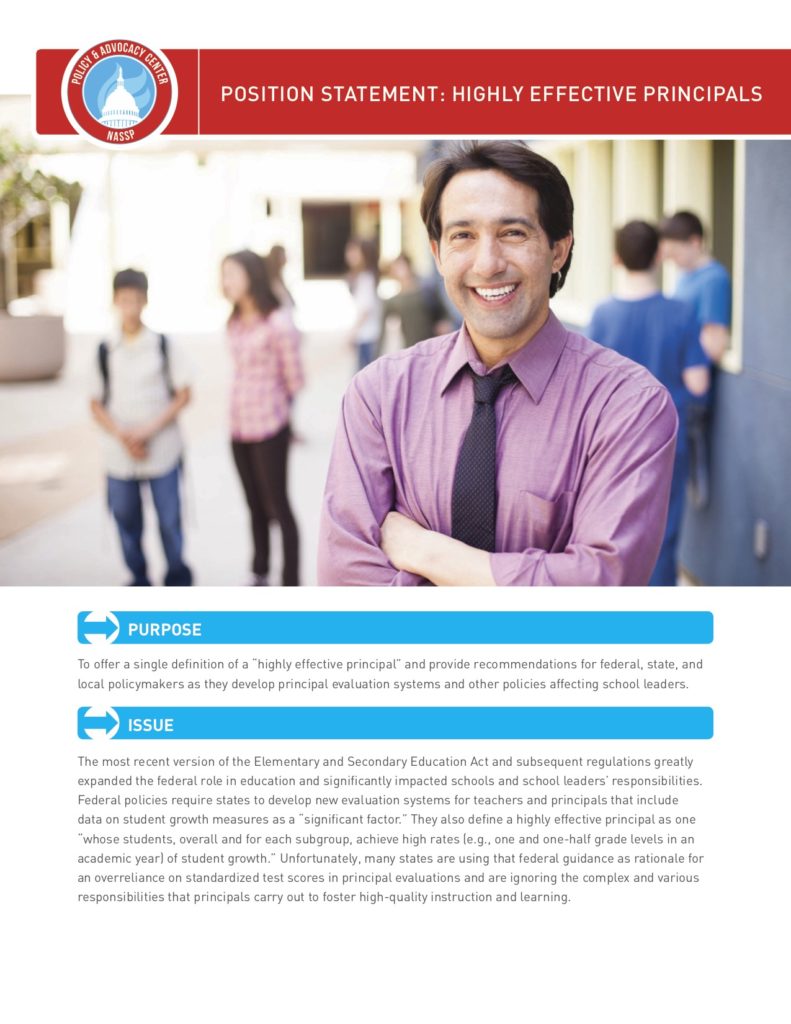

Purpose: To offer a single definition of a “highly effective principal” and provide recommendations for federal, state, and local policymakers as they develop principal evaluation systems and other policies affecting school leaders.
The Every Student Succeeds Act (ESSA), which is the most recent version of the Elementary and Secondary Education Act, recognizes the importance of school leadership and its impact on school and student performance—however, it greatly reduced the federal role in education. Where federal policies once required states to develop evaluation systems for teachers and principals that included data on student growth measures as a “significant factor,” ESSA transferred the authority for creating educator evaluation systems to the states. ESSA also overturned federal regulations that had defined a highly effective principal as one “whose students, overall and for each subgroup, achieve high rates (e.g., one and one-half grade levels in an academic year) of student growth.” Previously, many states used that federal guidance as rationale for an overreliance on standardized test scores in principal evaluations and ignored the complex and various responsibilities that principals carry out to foster high-quality instruction and learning. ESSA only requires states to publicly report the “methods or criteria” used to measure teacher and principal effectiveness, so states have an opportunity to rethink their evaluation systems and the definition of a highly effective principal.
Council of Chief State School Officers. (2015). Model principal supervisor professional standards 2015. Washington, DC: CCSSO.
Gill, B. (2016). Measuring principal performance is hard – but we need to try. Retrieved from https://www.mathematica.org/commentary/measuring-principal-performance-is-hard
Krasnoff, B. (2015). Leadership qualities of effective principals. Portland, OR: Education Northwest.
National Association of Elementary School Principals & National Association of Secondary School Principals. (2012). Rethinking principal evaluation.Alexandria, VA: Author.
National Association of Secondary School Principals (2018). Building Ranks™: A comprehensive framework for effective school leaders. Retrieved from https://www.nassp.org/professional-learning/building-ranks-for-school-leaders/
National Association of Secondary School Principals (2007). Changing role of the middle level and high school leader: Learning from the past—preparing for the future. Reston, VA: Author.
Virginia Board of Education. (2012). Guidelines for uniform performance standards and evaluation criteria for principals. Retrieved from www.doe.virginia.gov/teaching/performance_evaluation/guidelines_ups_eval_criteria_principals.pdf
National Policy Board for Educational Administration (2018). National educational leadership preparation (NELP) program standards – building level. Retrieved from www.npbea.org.
National Policy Board for Educational Administration (2015). Professional standards for educational leaders. Reston, VA.